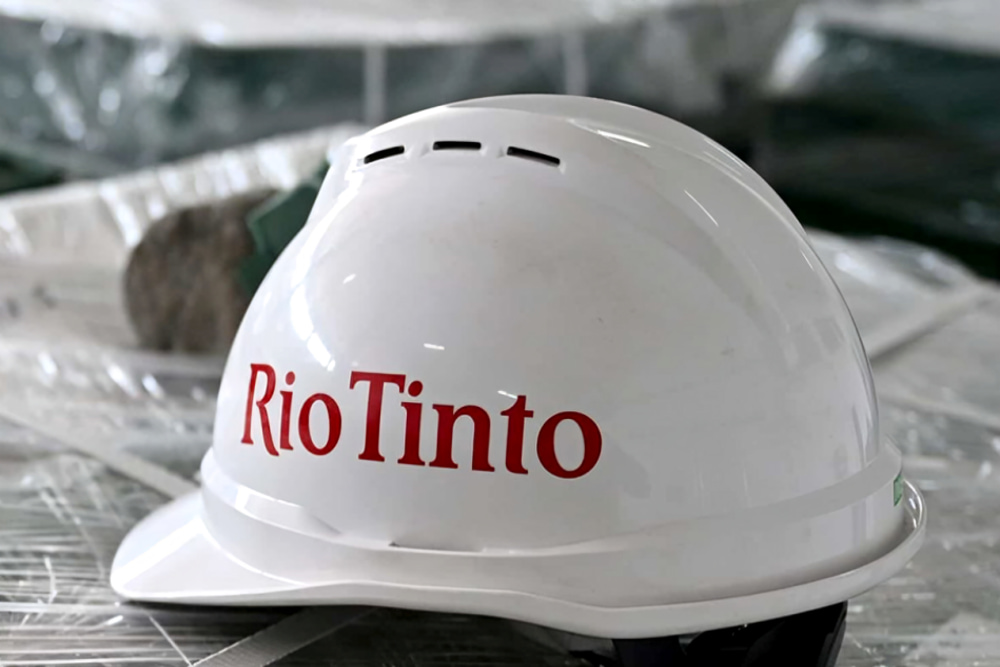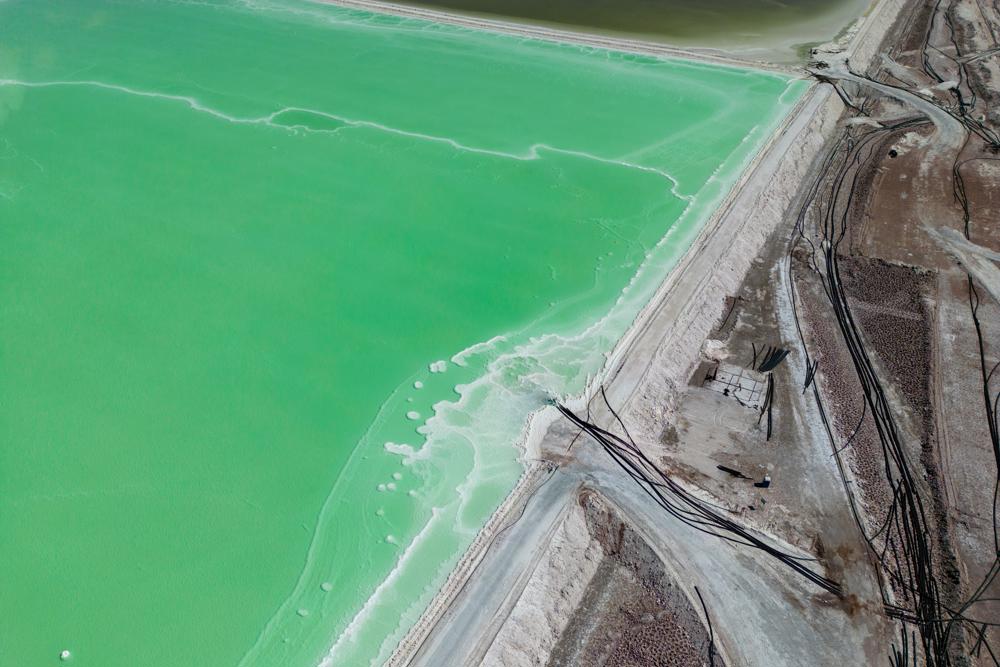
For decades, the Oyu Tolgoi joint venture inMongolia’s southeastern Gobi Desert, managed by Rio Tinto, has been one of the world’s most highly anticipated copper projects. Early signs suggest that the US$6.9 billion endeavour is on track to meet its long-term production goals.
The project is progressing well, with output increasing by 50 per cent over the past year. The operation aims to produce 500,000 tonnes of copper per year starting in2028 and continuing through at least 2036. This could position it as the fourth-largest copper operation globally by 2030.
Also known as Turquoise Hill, the project is located 751kilometres south of Ulaanbaatar. The management recently launched an alternative mine plan, confident that this slight shift will not hinder the mine’s ongoing ramp-up or its production guidance of 780,000 to 850,000 tonnes per annum (tpa) on a consolidated basis. They believe the ore body offers multiple development pathways.
In early June, Rio Tinto, which holds a 66 per cent stake in the underground porphyry deposit, announced plans to advance activities on panel two of Hugo North’s Lift One, having initially focused on panel one in a joint venture with Canadian miner Entrée Resources Ltd. This mining schedule was set to remain until 2017, but Rio is adjusting it pending the necessary licence transfer from Entrée to Oyu Tolgoi LLC.
Limited development will continue in panel one outside the Entrée JV area, while resources are being re-allocated to accelerate work in panel two south, beyond the miner’s jurisdiction.
“Oyu Tolgoi continues to ramp up as planned, with the cave performing above expectations,” said Rio copper CEO Katie Jackson.
“Our understanding of the ore body is growing as production progresses, enhancing our confidence and flexibility. “With lateral development work just commencing in panel one, now is the ideal time to pivot and expedite development in panel two south. “Transferring the licences for the Entrée joint venture area will maximise the value Oyu Tolgoi delivers for all stakeholders.”
Originally discovered in 1996 as a copper deposit, Oyu Tolgoi garnered significant interest in the 2000s when Canadian firm Ivanhoe Mines, led by Robert Friedland, acquired the project from BHP during a fire sale. They invested heavily in establishing a camp and extensive drilling.
Rio began to acquire a stake in 2006, and construction commenced in late 2009 following an investment agreement with the Mongolian government. The first concentrate was produced in 2012 from the Oyut open pit, which by 2023 had proven and probable reserves of 702 million tonnes of copper at 0.44 per cent and gold at 0.29 grams per tonne. Initially, the underground targets, Hugo North and Hugo South, were planned as classic block caving exercises.
However, in 2019, Rio opted for a panel-based approach to break the mining targets into smaller sections, providing a controlled method that isolates and manages stability while reducing production risks. This strategy also optimises ventilation and increases draw points.
As of 2023, Hugo North holds probable reserves of 447 million tonnes at 1.55 per cent copper and 0.32 g/t gold, alongside measured and indicated reserves of 534,000 tonnes at 1.48 per cent copper and 0.4 g/t gold. Hugo South has inferred resources of 732 million tonnes at 0.97 per cent copper and 0.3 g/t gold, while the nearby Heruga site boasts an inferred copper resource of 1.06 billion tonnes at 0.4 per cent and gold at 0.7 g/t.
Rio also notes the project includes molybdenum and silver by-products. Ivanhoe’s extensive fieldwork confirmed gold as an economic component, with production estimates ranging from 369,000 ounces (2013-2027) to 260,000 ounces (2022-2051). Projected annual gross revenue is estimated to be between US$3.8 billion and US$4.6 billion from 2026 to 2029.
During this period, sustaining capital expenditure is expected to range from US$0.3 billion to US$0.4 billion, while operational spending is projected to be between US$1 billion and US$2 billion. In June, RBC Capital Markets valued Oyu Tolgoi at US$15 billion, constituting 13 per cent of Rio’s net asset value, with expectations of contributing 17 to 20 per cent to earnings between 2027 and 2030.
Oyu Tolgoi LLC holds three wholly-owned mining licences – Manakht (4,533 hectares), Oyu Tolgoi (8,490 ha), and Khukh Khad (1,763 ha) – and two joint venture licences with Entrée: Shivee Tolgoi (42,593 ha) and Javkhlant (20,327 ha).
Under Mongolian law, mining licences are valid for 30 years, with two possible 20- year extensions, with renewals due in 2039. According to Discovery Alert, the project’s success hinges on optimised future production strategies.
Successful negotiations could lead to streamlined operations and increased copper output, while failures may result in reduced projections and operational delays. As investors assess these scenarios, understanding the ore’s geology is crucial. The complexities of mineral extraction in the Gobi Desert demand advanced technology and strategic planning.
Oyu Tolgoi’s potential impact extends beyond regional borders, coinciding with rising global copper demand. Investors are particularly keen on government-backed assurances of transparency and agility in mining investments, as well as technological innovations in extraction and processing. These factors have attracted global industry players, igniting further analysis of the project’s long-term implications.
The broader economic landscape is influenced by rapidly fluctuating commodity prices, making the successful implementation of the Rio Tinto-Entrée negotiations critical for stakeholders and global investors alike. The geological challenges at Oyu Tolgoi necessitate advanced extraction techniques. Understanding ore deposit formation is crucial for efficient mining methods and for addressing operational challenges and investment trends. Australia is contributing to the project’s reputation through professional training initiatives.
In March, Rio and the University of Queensland launched the South Gobi Underground Mass Mining Institute (SGUMMI). This initiative aims to address the industry’s skills gap, as Rio noted a decline in students pursuing mining engineering. SGUMMI will serve as the primary training site for its inaugural cohort of 28 participants from various organisations. The university will oversee the institute, with a curriculum centred on essential engineering disciplines such as underground mining and geotechnics.
By 2026, the institute will welcome local and international mining companies for training, aiming for accreditation from a globally recognised mining university by its third year. Ultimately, SGUMMI aspires to become a strategic hub for mining education in Asia, benefitting Mongolia’s mineral resources community and contributing to the global mining workforce.









